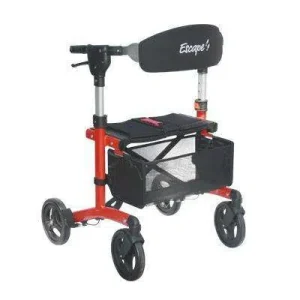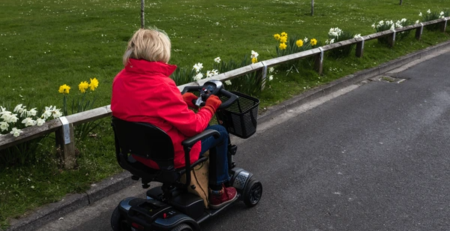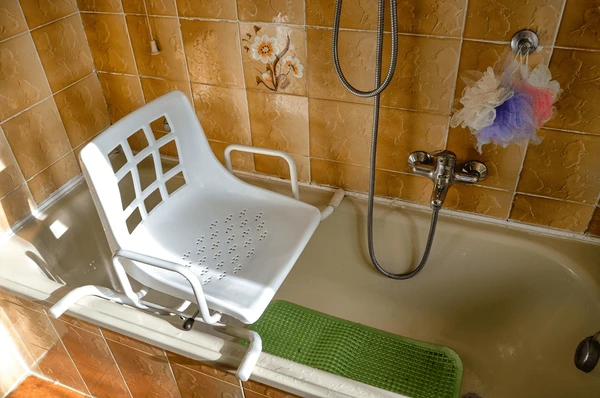9
Apr
Different Types of Walkers for Elderly and Handicapped
Walking is a fundamental activity that most of us take for granted until it becomes challenging due to age, disability, or injury. For elderly individuals and those with physical limitations, a walker can be a lifeline, providing support and stability while enhancing their mobility. In this blog, we will delve into the different types of walkers designed to cater to the specific needs of seniors and individuals with disabilities. We'll discuss features like rubber-tipped legs, hand grips, bariatric walkers, height adjustability, and more to help you make an informed decision when it comes to purchasing a walker.
There are a number of different types of walkers for elderly used by the elderly and/or those who are handicapped. One size does not fit all. What works for one, may not work for another. Some require lots of support while others may not require much at all. So, here is a list of different walkers for the elderly and important information about each type.
Heavy Duty Walkers is designed to hold up to 300-500 pounds and comes in various styles that make it widely suitable. This type of walker comes without wheels but has the option to add wheels. In addition to wheels, a seat pad and a basket can be a luxury on the rollator styles. This walker can be found at places like Walgreens, Rite-Aid, Walmart, and Overstock.com just to name a few.
There are different types of walkers avaibale:
Two-in-One and Three-in-One Walkers
2 in 1 walker is not just your average walker. These walkers can be converted into wheelchairs as well. This type of walker is convenient for those who like to be independent but also would like to be able to have mobility while sitting or being transported. 3 in 1 walkers are much like the 2 in 1 walker, but with an added backrest option. This type of walker can be used indoors as well as outdoors. The 3 in 1 walker is great for those who want options! The seat and backrest can be removed and this type of walker, like the others, is able to be folded down and stored.Rollators
The rollator is a walker with wheels that also have a seating option. This type of walker comes with a storage bin that makes shopping easier. The rollator allows users to stop and relax when they need to. This type of walker is great for those that like to be out and about. This walker can often fold up, making it easy to store when it's not being used or to travel by fitting in a car.Standard Walkers for elderly
Standard walkers are the most basic type of walkers available. This type of walker has four legs and provides stability, a step up from a basic cane. This type of walker is appropriate for those who do not wish to have wheels and seating options. For those who just need a little support and do not wish to have mobility with wheels, this type of walker is great for control and stability with each step. Standard walkers are among the cheapest to afford. Traditional Walkers with Rubber-Tipped Legs: Traditional walkers are a classic choice for many seniors and handicapped individuals. These walkers typically have a sturdy frame with four legs, each equipped with rubber tips at the bottom to provide traction and stability. Rubber tips are essential to prevent slipping, especially on smooth surfaces, and they also minimize the risk of scratches on indoor flooring. Traditional walkers are relatively lightweight and easy to maneuver. They offer exceptional support, making them an excellent choice for those who require substantial stability while walking. However, they do not have wheels, which may require users to lift the walker with each step. These walkers are ideal for those who need maximum support and are not concerned with speed or convenience. Front Wheeled Walkers: Front-wheeled walkers, also known as rollators, combine the stability of traditional walkers with the added convenience of wheels. These walkers have two fixed front wheels and two rubber-tipped legs in the rear. The wheels allow for easier movement and require less effort to advance, making them suitable for individuals with limited upper body strength or stamina. Front-wheeled walkers provide enhanced maneuverability and are well-suited for those who need moderate support but still desire some degree of independence. They often come with hand brakes for added safety, and the rubber-tipped legs at the back provide stability when stopping or sitting. Walker for Seniors with Hand Grips: The hand grips on a walker are crucial for user comfort and control. Traditional walkers usually feature basic hand grips that are ergonomically designed for a secure hold. However, some walkers come with additional features like padded or contoured hand grips for added comfort. These enhancements can be especially beneficial for users who experience hand pain, arthritis, or discomfort during extended use. Hand grips are also an important factor in maintaining balance and preventing accidents. Proper grip and wrist alignment are essential for the user's stability and confidence while walking. In some cases, a physical therapist may assist in selecting a walker with the most suitable hand grip design, taking the individual's specific needs into account. Height-Adjustable Walkers: One size does not fit all when it comes to walkers. Height-adjustable walkers are designed to accommodate individuals of various heights. These types of walkers typically have push-button mechanisms or easy-to-adjust knobs that allow users or caregivers to customize the walker's height. A walker with an incorrect height setting can lead to poor posture and discomfort, so ensuring proper height is essential for both safety and comfort. When selecting a height-adjustable walker, it's crucial to consider the user's height, weight, and individual preferences. A walker that's too tall or too short can increase the risk of falling or cause strain on the user's body. Walker and Rollator Combination: Some walkers offer a combination of features from both traditional walkers and rollators. These hybrid walkers typically have two fixed wheels in the front and two rubber-tipped legs in the back. This design allows for a compromise between the stability of a traditional walker and the convenience of a rollator. The dual functionality can be especially beneficial for users who may require different levels of support on different occasions. These walkers often come with a seat and storage pouch, making them suitable for those who need to take breaks during their walks. Rollators with Three or Four Wheels: Rollators come in both three-wheeled and four-wheeled variations. Three-wheeled rollators are a more compact and lightweight option, providing excellent maneuverability. However, they may offer slightly less stability compared to four-wheeled models. Four-wheeled rollators are more stable and suitable for users who need substantial support but are still able to walk with minimal assistance. The choice between three and four wheels depends on the user's mobility and balance. A physical therapist can provide guidance on selecting the right rollator based on an individual's specific needs.Choose the right types of Walker Accessories for Elderly and Handicapped:
Many walkers come with a range of accessories to enhance the patient experience and safety. Some common accessories include: Walker Trays: These attachable trays provide a convenient platform for carrying items like meals, books, or personal belongings while using the walker. Cane Holders: These holders allow users to securely store their walking canes on the walker when not in use. Cup Holders: Cup holders are useful for carrying beverages or water bottles while walking. Oxygen Tank Holders: For users who require supplemental oxygen, some walkers come with attachments to hold oxygen tanks securely. Wheels and Brakes: Upgrades like larger wheels or locking brakes can further customize a walker to the user's needs.Conclusion
Selecting the right types of walker for the elderly and handicapped is a crucial decision that can significantly impact the user's mobility and quality of life. Consider factors such as stability, maneuverability, height adjustability, hand grips, and additional features when making your choice. Consult with a physical therapist or healthcare professional for personalized guidance in choosing the most suitable walker for your specific needs. Remember that a walker is not just a mobility aid; it's a tool that can provide increased independence and safety for those who need it most.
Share:






